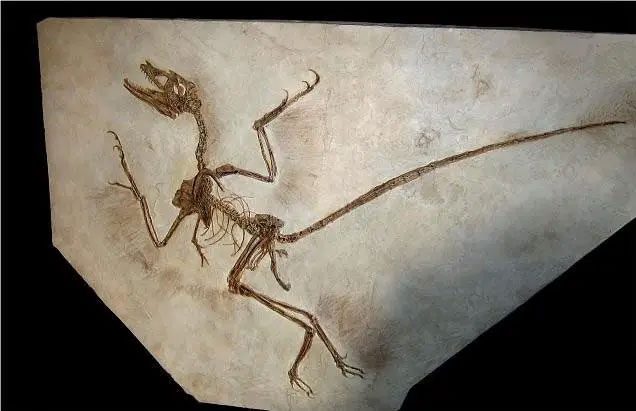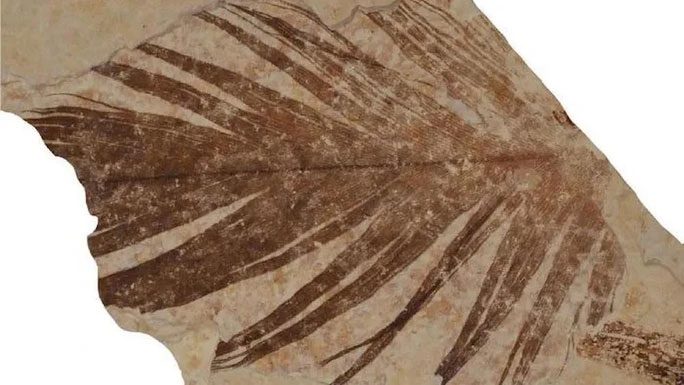A new X-ray analysis of rare specimens in China has provided paleontologists with unprecedented insights into dinosaurs and their living “fossil” descendants.
According to Live Science, paleontologists examined the feathers of three ancient species and compared them with those of modern birds—the living “descendants” of dinosaurs.
The ancient specimens include feathers from Confuciusornis, known as the “Confucius Dinosaur”, which was previously excavated in Liaoning. This 125-million-year-old creature is named after the renowned philosopher and politician of China because it was discovered near his hometown.

Fossilized skeleton of the Confucius Dinosaur – (Image: DINOSAUR DATABASE).
The Confucius Dinosaur is also considered a primitive bird, representing a significant evolutionary step as dinosaurs transitioned into birds.
The second ancient species is a bird-like dinosaur named Sinornithosaurus, also 125 million years old and found in Liaoning.
This dating places both dinosaur species at the early stage of the Cretaceous period, the golden age of dinosaurs, and also marks the time when avian ancestors were beginning to diverge.
The third analyzed feather fossil belongs to an unidentified species, resembling a primitive bird, 50 million years old, and excavated from the Green River Formation in Wyoming, USA.

Feathers of a mysterious creature in Wyoming – (Image: Tiffany Slater).
The feathers of all three specimens were compared with modern birds, revealing unexpected traces of beta keratin proteins (CBP), which are essential for strengthening feathers for flight.
This finding completely overturns previous research suggesting that bird-like dinosaur feathers—primitive birds were fundamentally different from modern birds and primarily contained weaker alpha proteins, lacking modern CBP.
“Initial reports suggested that ancient feathers were primarily composed of alpha proteins, potentially artifacts of the fossilization process,” said Dr. Tiffany Slater, a paleontologist from University College Cork (UK) and a member of the international research team.
This newly published study in Nature Ecology and Evolution pushes back the evolutionary history of feathers by tens of millions of years and indicates that many characteristics in modern birds may have much older origins.
These traits have been remarkably preserved through the mass extinction at the end of the Cretaceous period caused by the massive Chicxulub asteroid.
Additionally, this provides further evidence that Northeast China is an intriguing site for paleontologists, where bird-like dinosaurs thrived, alongside another area being North America.


















































